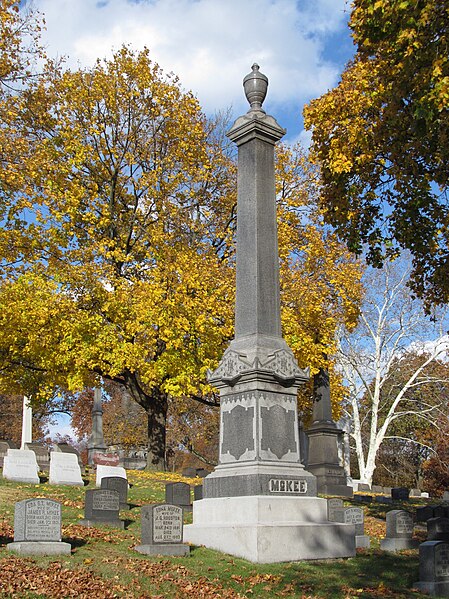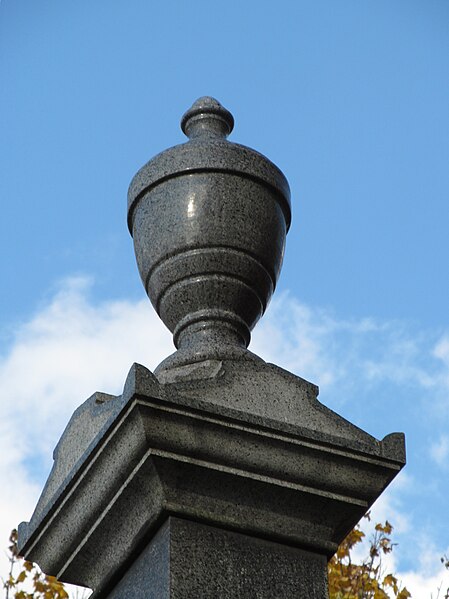
There are many obelisks with crosses in St. Mary’s Cemetery, but this one stands out for its remarkably dramatic epitaph. Bartley Campbell (1843–1888) was, by many accounts, the first American to make his living as a playwright. He was born in Pittsburgh, and began his writing career as a teenage reporter for Pittsburgh newspapers. But a tremendously successful play called Through Fire in 1871 gave him the courage to devote himself to drama exclusively.
Campbell wrote plays perfectly adapted to the tastes of the middlebrow American public of the 1870s and 1880s—melodramas with sneering villains and virtuous heroines. He gained a national reputation writing for the theaters in Pittsburgh, and let that fact sink in and inspire our current crop of local dramatists.
Of all his plays, by far the most famous was The White Slave, which was a theatrical staple for decades and still comes up as the premier example of Victorian melodrama. It has a perfect Campbell plot: a woman in the antebellum era is made to believe that she is an “octoroon”—that one of her great-grandparents was Black, so that she has an eighth African blood. By Southern laws, that makes her colored and a slave, and puts her at the mercy of the sneering villain.

Here are the two most famous scenes from the play depicted on a poster. At the top, the heroine responds contemptuously to the villain’s threat to put her with the common slaves unless she consents to be his “favorite”: “Rags are royal raiment when worn for virtue’s sake.” It was one of the most remembered lines in nineteenth-century American theater. Below, the inevitable public shaming of the villain. And here is the epitaph on Campbell’s monument:

Anyone strolling through this cemetery in the late 1800s would recognize that line at once, and gratefully say a prayer for Bartley Campbell.
And how did making his living as a playwright work out for Campbell? He went insane from the stress of it and died in an asylum at the age of 43. So perhaps it was not quite time for American playwrights to give up their day jobs.

Many thanks to Lawrenceville historian James Wudarczyk for pointing out this monument and the story behind it.









